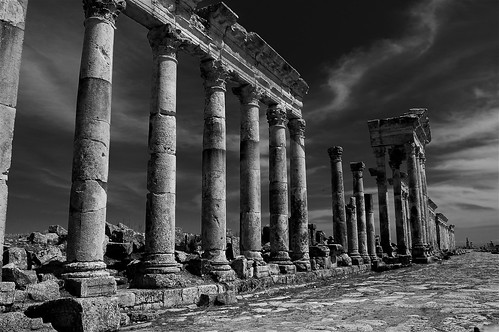 Black and White photography is an artform unto itself – it’s so much more than just clicking “Greyscale” in Photoshop, which will oftentimes just give a bland result. Several adjustments and the right lighting is required to make a black and white image work, and in Robinho’s image of Roman ruins in Apamea, Syria we see a fantastic, dramatic shot.
Black and White photography is an artform unto itself – it’s so much more than just clicking “Greyscale” in Photoshop, which will oftentimes just give a bland result. Several adjustments and the right lighting is required to make a black and white image work, and in Robinho’s image of Roman ruins in Apamea, Syria we see a fantastic, dramatic shot.
The city of Apamea was adjacent to the Orontes River as served as a treasure city of the Seleucid. It was annexed and formed part of the Roman Empire from 64BC, and it is from the Roman era that many of the remains emanate from today. The city also served as a cross point from travellers heading to the East, and many distinguished figures stopped there, including Cleopatra, Septimus Severus and the Emperor Caracalla.
Robinho’s beautiful image of the Cardo Maximus is a stunning feature in itself – a road of 1.85 kilometres long, and 87 metres wide, the length was flanked by high walls and twisted-flute columns. On both sides of this thoroughfare would have been several civil buildings and monuments.
You can learn more about Apamea here at Heritage Key, as well as our Top 10 ancient sites in Syria and be sure to take a look at Robinho’s Flickrstream!